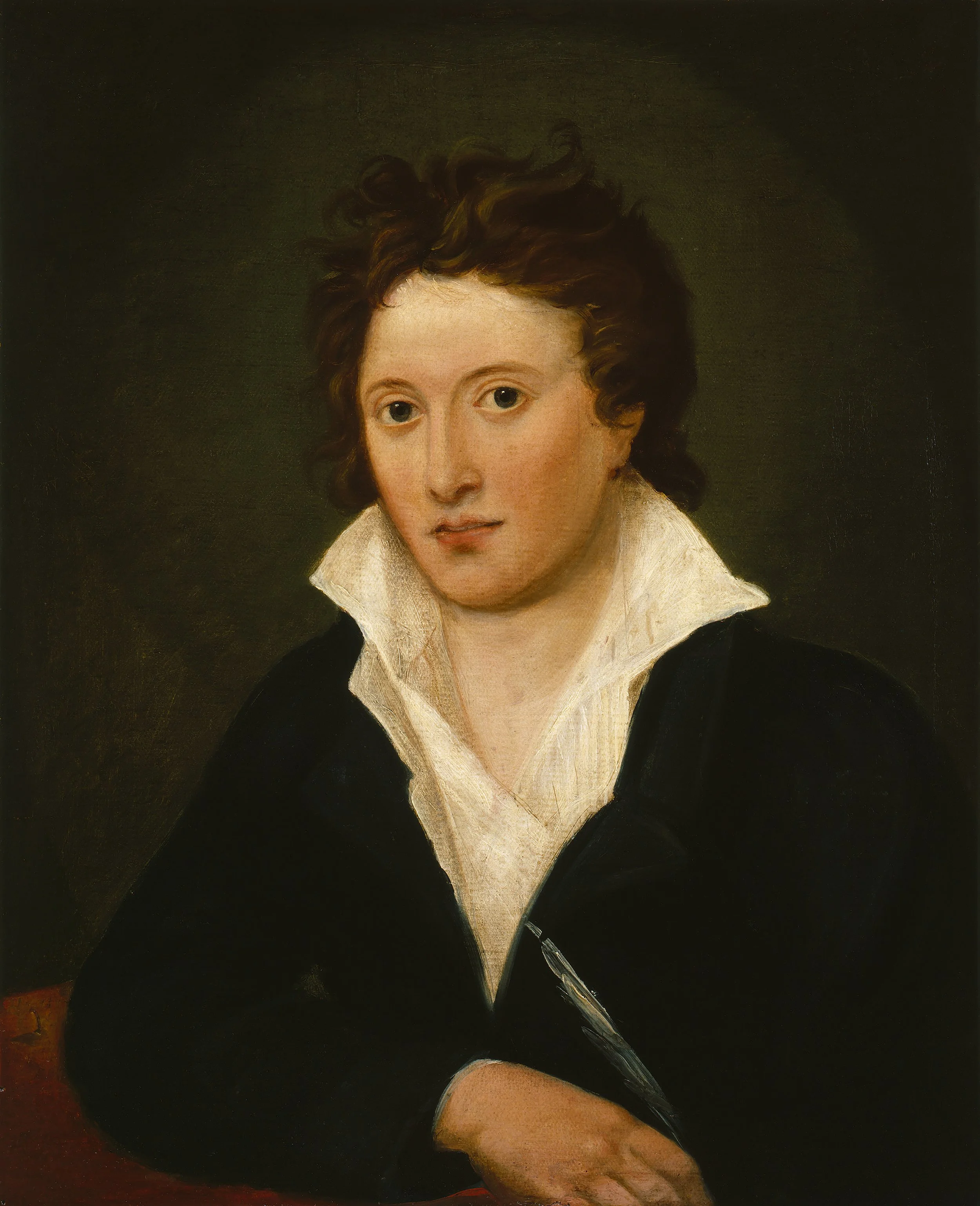The West Portrait of Percy Bysshe Shelley
An Interview with Andrew Stauffer, University of Virginia
Percy Bysshe Shelley, by William Edward West, oil on canvas, 7.25 in x 9.25 in (University of Virginia Library).
Percy Bysshe Shelley, by Amelia Curran, oil on canvas, 1819 (© National Portrait Gallery, London).
“It may be that, given what we do not know about the genesis of the West portrait, we will never be certain that the resemblance is true— that it gives us clear access to Shelley as he appeared during his lifetime. But it seems right to say that the West portrait gives us the best chance that we are ever going to get to “see Shelley plain.” And even if we, along with Browning, will never see Shelley, the American painter William West did, in early July 1822, in the sun-drenched rooms of the Villa Rosso in Montenero and in the days that followed in Pisa and Livorno. Out of those encounters emerged this portrait, based on impressions gathered by a painter’s eye and pencil, just before Shelley slipped from our collective view for good beneath the waters off Viareggio.” —from Stauffer’s “The West Portrait of Percy Bysshe Shelley: A Reconsideration," forthcoming in the Keats-Shelley Journal
Andrew Stauffer’s forthcoming article in the Keats-Shelley Journal offers a reconsideration of William Edward West’s portrait of Percy Bysshe Shelley. In this brief interview, Stauffer shares more about his interest in the portrait, its impact on our perceptions of Shelley, and his research process.
What sparked your interest in this portrait?
I stumbled across the West portrait of Shelley while doing research for my forthcoming biography of Lord Byron, and I was instantly drawn in. I knew West had painted portraits of both Byron and Teresa Guiccioli in Pisa in 1822, and so I was interested in the timeline of events. The more I dug into the history of the West portrait, I realized that the arguments made in the 1940s against its authenticity as an image of Shelley were circumstantial and ultimately unconvincing to me. But it was really the side-by-side comparison of the West painting with the other known portraits of Shelley and Leigh Hunt that confirmed things. When Newman Ivey White did his earlier comparisons, he was working with relatively low-quality black and white reproductions. High-resolution color digital images really help us see the West Shelley in a new light.
Did this portrait alter your impressions of Percy Shelley?
It actually confirmed my sense of Shelley as an urbane, mature thinker and poet. Like many, I’ve always been somewhat dismayed by the existing portraits, most of them descending from Amelia Curran’s rather amateurish painting. Seeing the West portrait for the first time, especially in person in the Special Collections room at the University of Virginia, where it is held, felt like a moment of recognition.
What does this portrait communicate about P.B. Shelley that is absent in other representations of the poet, like the Curran portrait?
The Curran portrait and its descendant images have etherealized and in some ways infantilized Shelley. The West painting reveals him as more grown up, less cherubic; more political, less an open-collared Romantic a la Byron; less cartoonish around the eyes. The West Shelley has a more searching, confident, inquiring look in keeping with his political and philosophical turn of mind. Ultimately, he looks less idealized, and more real.
How do you think this portrait might influence our reading of Percy Shelley's works?
The portrait works to counteract a view of Shelley as Matthew Arnold’s “beautiful and ineffectual angel,” and the accompanying sense, encouraged by the Victorians and Modernists, that his poetry is lost in idealistic dreams. This is a representation of an active, serious person who wanted to change the world not just through art, but through political philosophy and indeed political action. Hauntingly, it captures him just days before his death. It’s a snapshot of a man at the height of his powers, based on sketch taken from life just before he disappeared forever.
Is there anything you'd like to share about your research process that might be beneficial to graduate students or early career scholars?
Follow the trails backward. Keep digging. Plenty of conventional wisdom isn’t as settled as you might think. This was a case in which I went back to Newman Ivey White’s influential work from the 1940s and asked hard questions of it, based on up-to-date evidence. It’s also a case that demonstrates how objects in our libraries – in this case, the West portrait – are living things, animated and in some very real ways constituted by scholarly attention.



